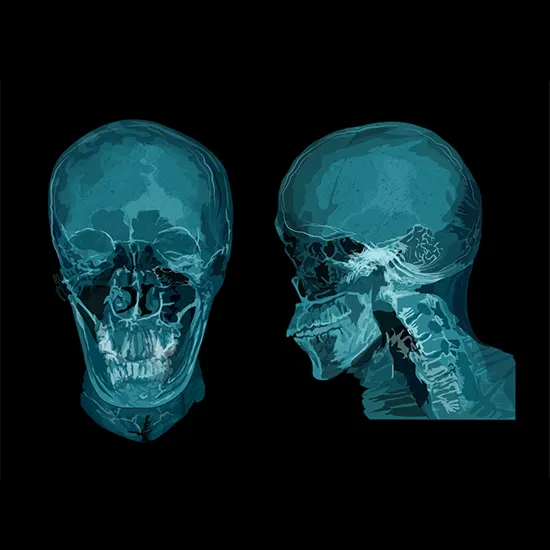
The area of medicine has undergone a revolution thanks to the use of x-rays in medical imaging. The imaging of the skull is one of the most significant applications of x-rays.
The area of medicine has undergone a revolution thanks to the use of x-rays in medical imaging. The imaging of the skull is one of the most significant applications of x-rays.
A diagnostic imaging examination called a skull x-ray can be used to diagnose a number of illnesses that affect the skull and brain. We shall discuss the function of a skull x-ray and its significance in the diagnosis of numerous medical problems in this essay.
What is an x-ray of the skull?
A cranial x-ray, commonly referred to as an x-ray of the skull, is a diagnostic procedure that employs ionising radiation to obtain finely detailed images of the skull's bones. This kind of imaging is frequently employed to assess head injuries, skull fractures, and numerous illnesses that affect the skull and brain.
The function of a skull X-ray in the diagnosis of medical conditions
Several medical conditions can only be diagnosed with the help of a skull x-ray. The following are a few of the ailments that can be identified by a skull x-ray:
Fractures and breaks in the skull's bones can be seen on X-rays, which can be used to assess the severity of an injury and guide the course of therapy.
X-rays can be used to detect meningiomas, acoustic neuromas, and other types of brain tumours as well as various diseases and tumours inside the skull.
Sinus issues: X-rays can be used to detect infections, sinusitis, and other related diseases that affect the sinuses.
X-rays can be used to detect hydrocephalus, a disease in which the cerebrospinal fluid inside the head accumulates abnormally.
X-rays can be used to detect the disease known as craniosynostosis, in which the skull's bones fuse prematurely and cause an irregular head shape.
Significance of a skull X-ray
For the detection and treatment of numerous medical diseases involving the skull and brain, skull X-rays are a crucial diagnostic tool. They give doctors and other medical professionals important data that helps them make precise diagnoses and create efficient treatment plans.
An x-ray of the skull is a rapid and painless treatment that also offers crucial diagnostic data. The patient only needs to remain motionless while the skull is being imaged by the x-ray machine. It normally takes a few minutes to finish the treatment, and no extra preparation is needed.
Conclusion
In conclusion, a skull x-ray is a crucial diagnostic tool for the identification and management of a wide range of illnesses that affect the skull and brain. It can aid in the early detection of craniosynostosis, hydrocephalus, tumours, and sinus issues.
An x-ray of the skull is a rapid and painless procedure that gives medical professionals important information that they can use to establish accurate diagnoses and create efficient treatment plans.









